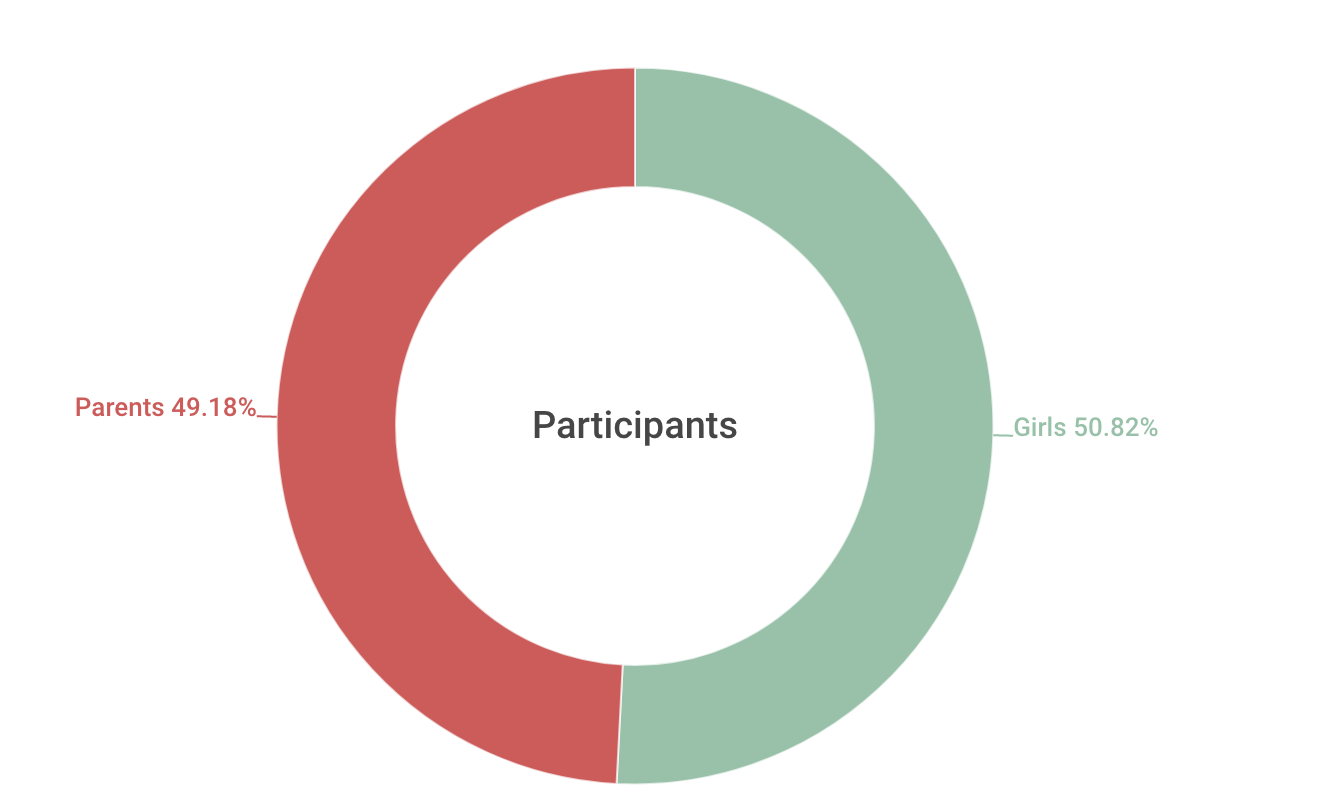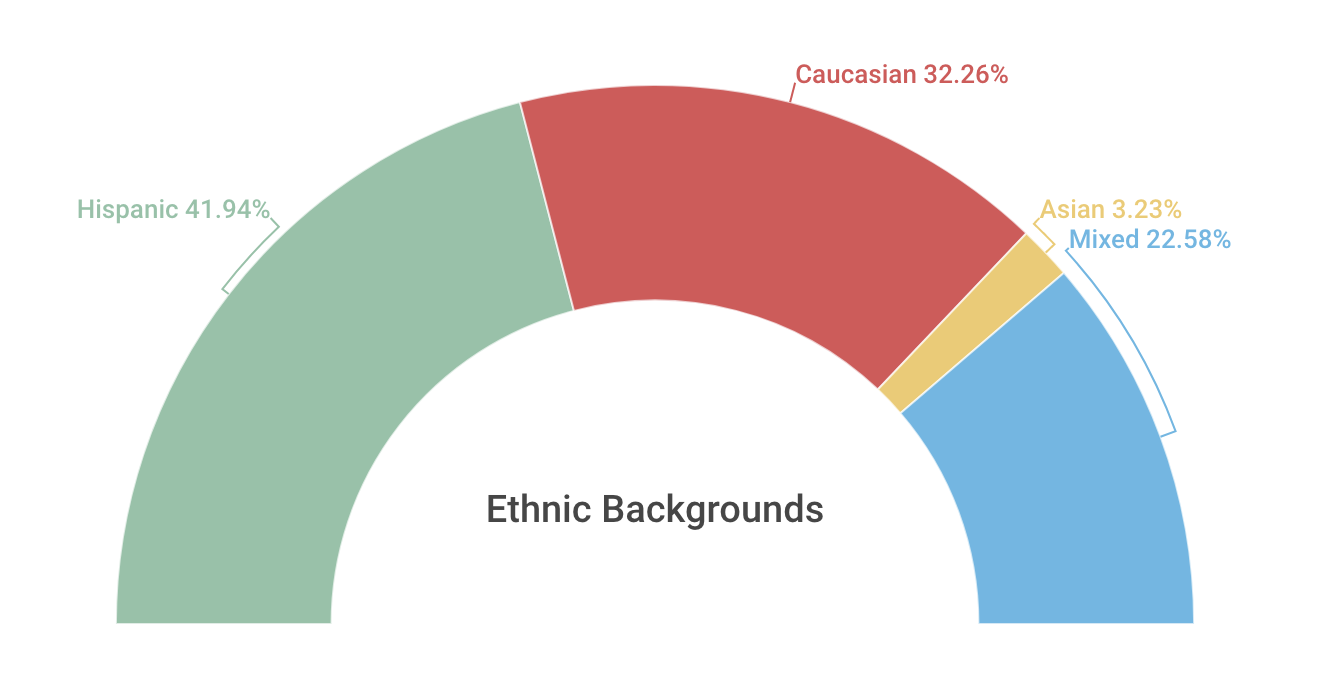Subject and Purpose
It is known that the media, including films and cartoons, directly impact the viewer’s personality. Research shows that children who have been exposed to Walt Disney’s fairytale universe from an early age adopt some of the attitudes and manners that describes characters. This research focused on determining the impact of Disney Princesses on of preschool age girls in the context of the transmission of gender stereotypes (Golden and Jacoby 299). The results showed that the concept of princesses lacking leadership skills and seeking to avoid interfering with men has a severe impact on young girls’ personality.
The age division of project participants: 31 preschool age girls and 30 parents.

Ethnic diversity of girls

Audience
The likely target audience for this study is parents, women, and men who are interested in the positive gender development of their children. Nevertheless, the article informs people about the importance of developing critical thinking skills, therefore, not only parents may be interested in reading, but teachers, caregivers, and grandparents. This concludes that, although the article has a quite specific focus, it may be of interest to all categories of the population. Moreover, Disney, Inc.’s representatives can become a cohort of readers, as the study examines the effect of the company’s products. Perhaps, they could rethink the concept of princesses to give them more autonomy and confidence. The readers’ values are aimed at the harmonious development of children; such people probably predict the negative impact of princesses on the image of a girl, so they decide to study the issue through research further. On the other hand, they may be people for whom this article seems to be something completely unexpected and surprising, as they could not imagine such social effects.
Tone
This research has a unique feature that is usually difficult to perform in scientific articles — a combination of scientific work style with popular and accessible to an unskilled audience. This research’s scientific tone is to measure results quantitatively and qualitatively; while the literary review, coupled with a discussion of the results, is the most straightforward. This feature allows to highlight fragments from an article and place them in school textbooks, newspapers, or magazines to introduce the audience to the phenomenon of Disney Princesses.
Speakers
The authors of the study do not disclose their story, but the study’s focus suggests that women are interested in the psychological aspects of girls’ education. Independent search on authors allows to understand that they are American women working in the Department of Psychology and Education, Mount Holyoke College. Among other scientific works, there is the only work by Jacoby devoted to early school education reforms.
Findings
The study showed that girls were adopting gender stereotypes about princesses and putting them into practice. Four stereotypical factors were identified: beauty, clothing, behavior, and boys.
Rhetorical Analysis
There are no doubts about the authenticity of the statements, because there is a logic of narration and supporting the opinions with statistical facts. First of all, the reader is invited to familiarize themselves with a small literary overview showing developments in the media’s degree of influence on the audience and especially children. Then, it is followed by a clear and concrete description of the experiment. Perhaps, this is the most attractive part of the study since the writing style evokes visual representations of the social experiment. Finally, there is a separate paragraph on the reliability of the results, eliminating elements of bias and subjectivity in the data. Quantitative metrics were statistically processed to determine the Pearson distribution: the data show a strong relationship between measurements and results.
Works Cited
Golden, Julia C., and Jennifer Wallace Jacoby. “Playing Princess: Preschool girls’ interpretations of gender stereotypes in Disney Princess Media.” Sex Roles, vol. 79, no. 5-6, 2018, pp. 299-313.
Kukreja, Jyoti. “Cartoons Cast an Eternal Impact on Personalities: Effects of Cartoons on Children.” Handbook of Research on Children’s Consumption of Digital Media, edited by Gülşah Sarı, IGI Global, 2019, pp. 369-379.